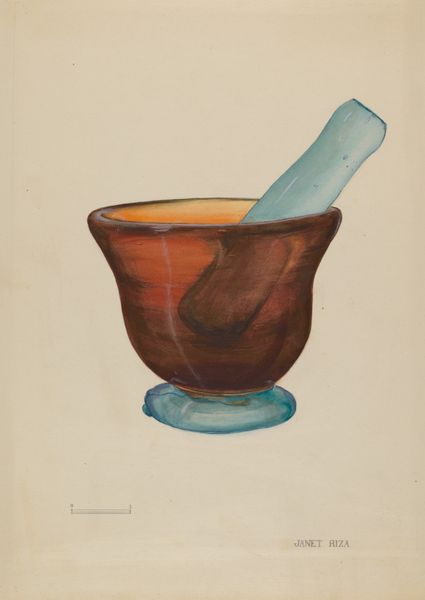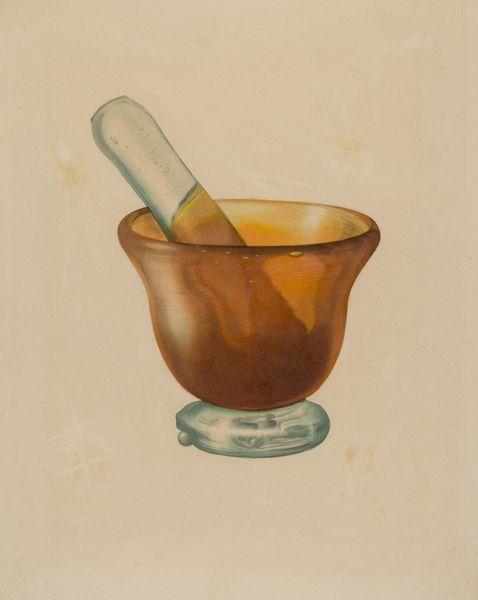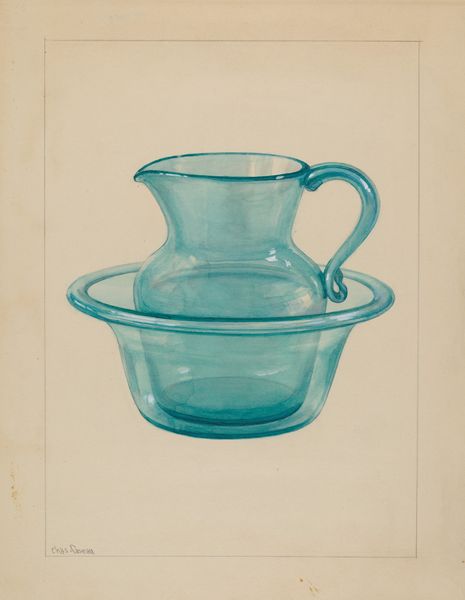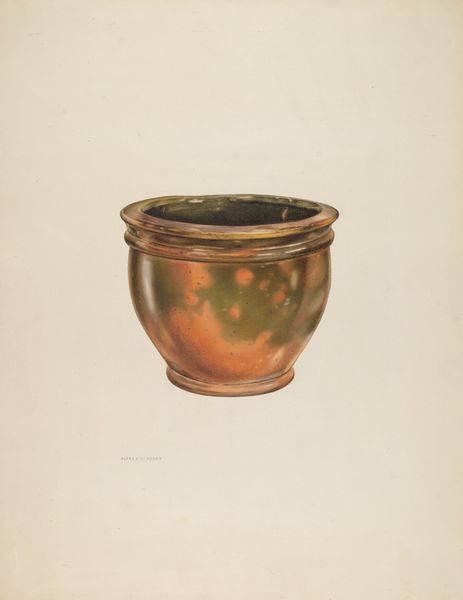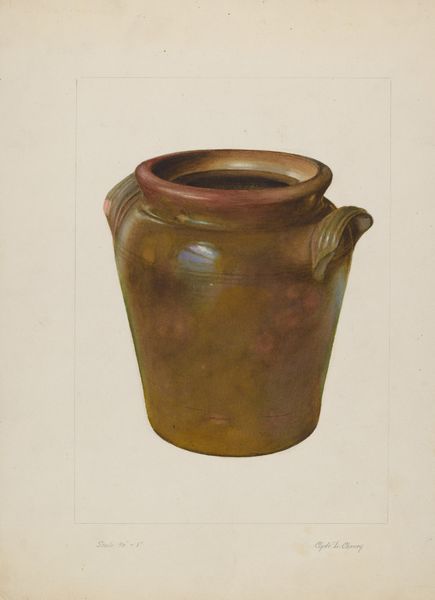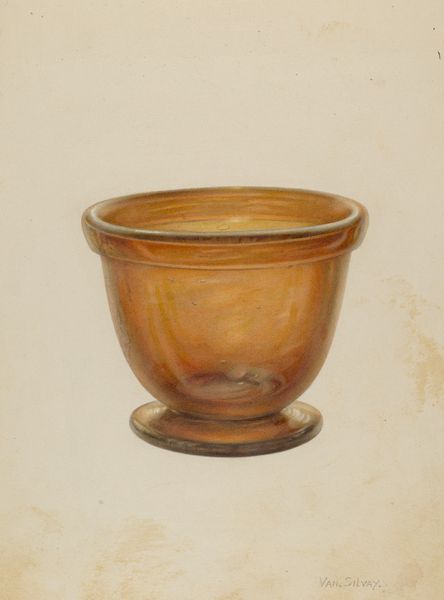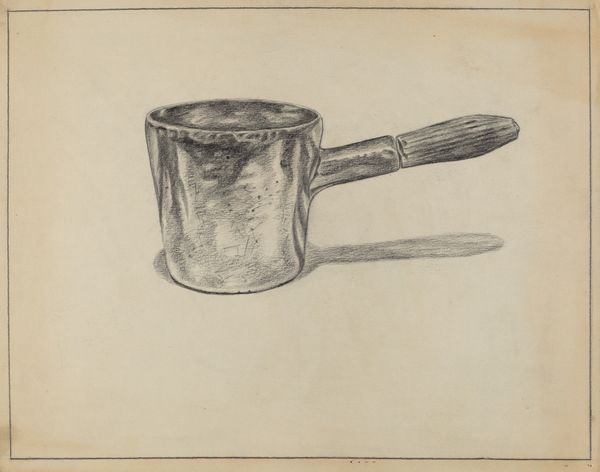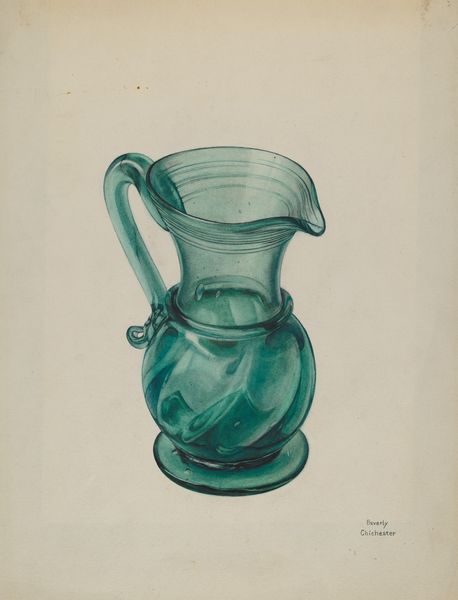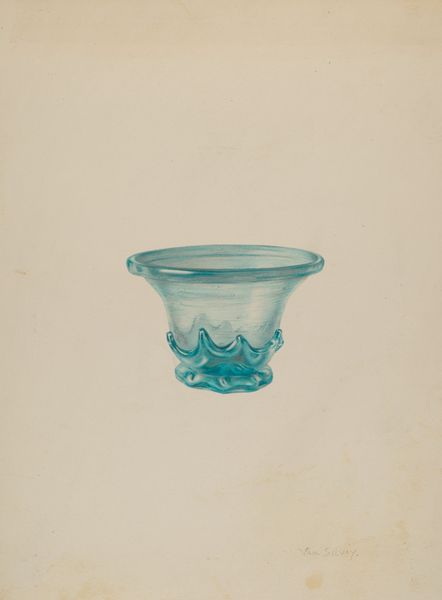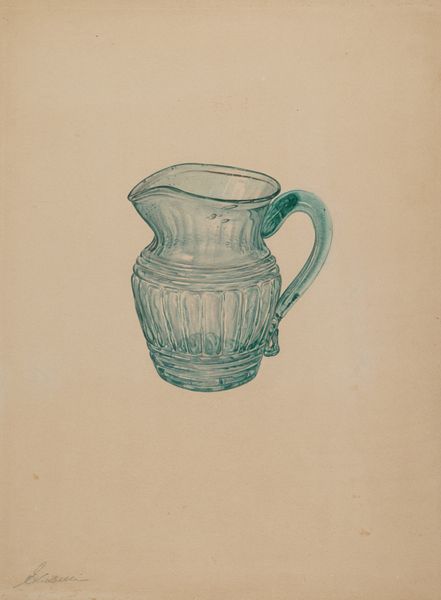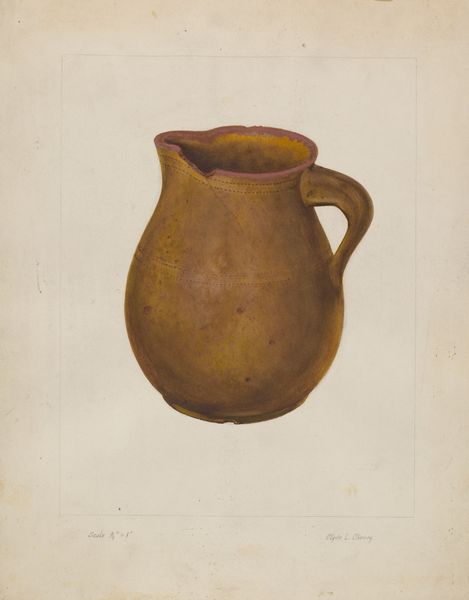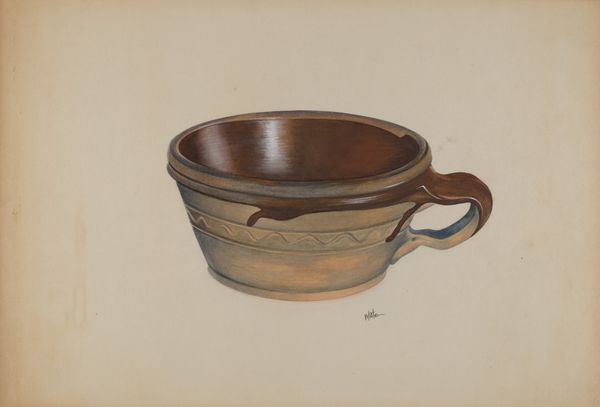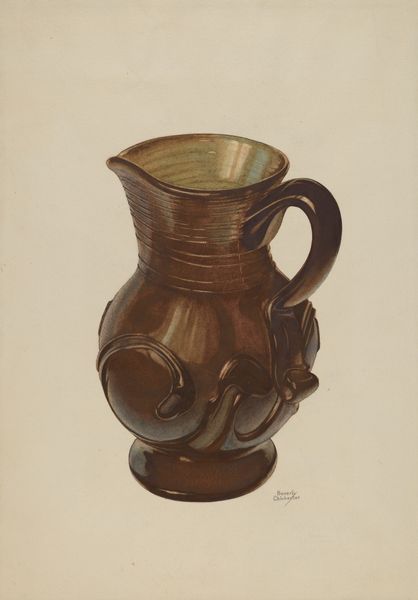
drawing, watercolor
#
drawing
#
oil painting
#
watercolor
#
watercolour illustration
#
watercolor
Dimensions: overall: 28.4 x 22.5 cm (11 3/16 x 8 7/8 in.)
Copyright: National Gallery of Art: CC0 1.0
Editor: So, this watercolor is called "Mortar and Pestle" by Eugene Barrell, made around 1937. It's a pretty straightforward depiction, but I’m curious about the choice of subject. What story might a seemingly simple still life of kitchen tools be trying to tell? Curator: Think about the mortar and pestle as tools deeply rooted in material processes, from the grinding of pigments for painting to the preparation of food and medicine. It begs the question: what is the artist trying to tell us about labor and materiality through this representation? Consider also that 1937 was a period of significant socio-economic upheaval. Does the humble mortar and pestle become a symbol of resilience, a return to basic necessities and skills during times of hardship? Editor: That makes a lot of sense. I hadn't considered the historical context that closely. Are you saying it challenges the traditional idea of "high art" by focusing on something so functional and common? Curator: Exactly! By choosing these humble objects, Barrell disrupts the hierarchy of subject matter. The work challenges us to appreciate the value of everyday processes and the skills associated with them. Is he commenting on class, consumption, and the societal perception of manual labor by representing objects central to those very activities? Editor: So it's not just a pretty picture; it's prompting us to think about the materials and labor behind… well, everything! I like that perspective. It’s so easy to overlook these things. Curator: Precisely. It reveals the stories embedded within objects and production processes, shifting focus away from aesthetic pleasure to social awareness. Editor: Okay, that completely changed how I see this piece. I was looking at the watercolor technique, but I missed all these layers of social meaning. Thanks for pointing it out.
Comments
No comments
Be the first to comment and join the conversation on the ultimate creative platform.
